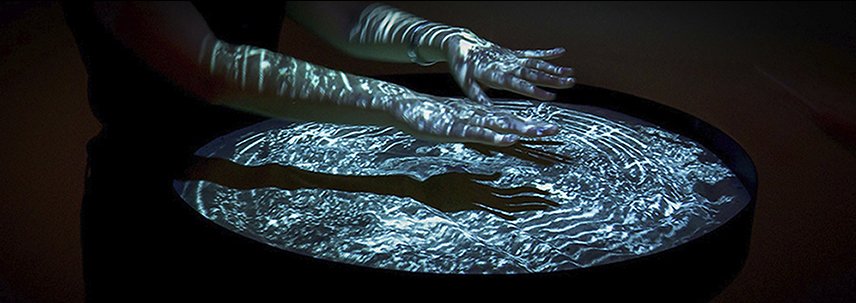
SAND-CLOCK
Time and space have been an essential source of inspiration for my work. In my interactive piece Sand-Clock, I am using the clock as a powerful and direct metaphor to represent the passing of time.
Every grain of sand could be interpreted as a time unit that we lose: a millisecond or one week, it could also be a blurry memory: a birthday, our first kiss, an orgasm, or any other specific event.
I was interested in creating a tangible experience of something that in essence is relative and intangible. The impossibility of freezing time and changing the speed and direction of it was one of my main inspirations for this work.
I was interested in expressing through interactive media that time is not absolute and space and time are dynamic quantities. For me, space and time not only affect, but are also affected by everything that happens in our universe.
Sand-Clock is based on the sense of touch, which Diane Ackerman in the book: A Natural History of the Senses describes as “the oldest sense, and the most urgent”.
I agree with the author, about the importance and urgency of the touch; especially in these times when touch is indispensable for the interaction with people. Touch is important in times where the virtual is replacing the sense of real in terms of elemental perception. I also believe that art has the power to generate changes in individuals and as such, artistic and sensorial experience that can be translated into a social change in the future.
Sand-Clock can be touched by the users and the users can be touched by the piece. This dialogue between object and receptor expands the senses, and generates new perceptions.
Sand-Clock is a piece (an object) that merges with different conceptual spaces (the labyrinth and the sandbox) into a new physical and mental space for meditation and introspection.
Sand-Clock received the 2010 Siemens-RMIT Fine Art Awards, Postgraduate Scholarship, RMIT. Melbourne, Australia.
